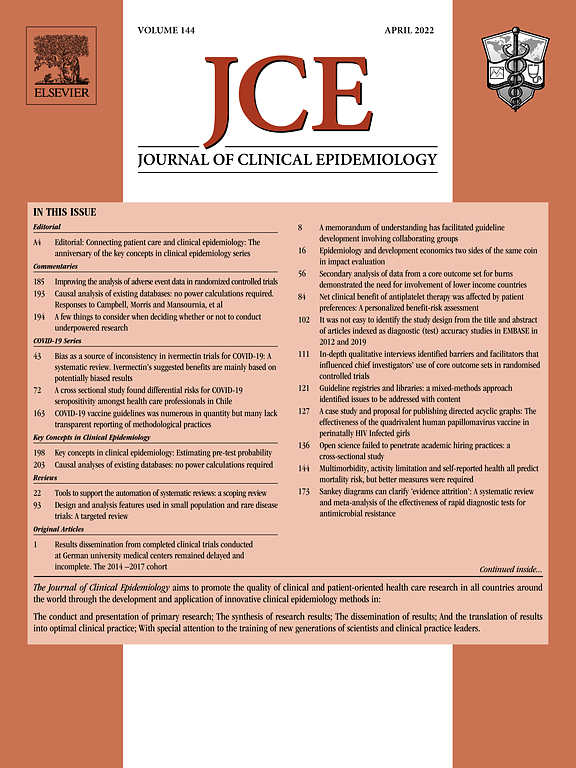An office-based cardiovascular prediction model developed and validated in cohort studies of a middle-income country
Authors
Affiliations
1Department of Epidemiology and Biostatistics, School of Public Health, Tehran University of Medical Sciences, Tehran, Iran; Osteoporosis Research Center, Endocrinology and Metabolism Clinical Sciences Institute, Tehran University of Medical Sciences, Tehran, Iran.
2Digestive Diseases Research Center, Digestive Diseases Research Institute, Tehran University of Medical Sciences, Tehran, Iran.
3Department of Epidemiology and Biostatistics, School of Public Health, Tehran University of Medical Sciences, Tehran, Iran. Electronic address: afotouhi@tums.ac.ir.
4Department of Epidemiology and Biostatistics, School of Public Health, Tehran University of Medical Sciences, Tehran, Iran.
5Isfahan Cardiovascular Research Center, Cardiovascular Research Institute, Isfahan University of Medical Sciences, Isfahan, Iran; School of Population and Public Health, Faculty of Medicine, University of British Columbia, Vancouver, British Columbia, Canada.
6Endocrine Research Center, Research Institute for Endocrine Sciences, Shahid Beheshti University of Medical Sciences, Tehran, Iran.
7Isfahan Cardiovascular Research Center, Cardiovascular Research Institute, Isfahan University of Medical Sciences, Isfahan, Iran.
8Prevention of Metabolic Disorders Research Center, Research Institute for Endocrine Sciences, Shahid Beheshti University of Medical Sciences, Tehran, Iran.
9Ophthalmic Epidemiology Research Center, Shahroud University of Medical Sciences, Shahroud, Iran.
10Isfahan Cardiovascular Research Center, Cardiovascular Research Institute, Isfahan University of Medical Sciences, Isfahan, Iran; Institute of Population Health Sciences, Barts and The London School of Medicine and Dentistry, Queen Mary University of London, London, UK.
11Cardiac Rehabilitation Research Center, Cardiovascular Research Institute, Isfahan University of Medical Sciences, Isfahan, Iran.
12Office for Prevention & Control of Heart Diseases, Center for Non-communicable Diseases Control, Ministry of Health, Iran.
13Biostatistics Unit, Deakin University, Geelong, Victoria, Australia.
14Department of Biomedical Data Sciences, sections Medical Statistics and Medical Decision Making, Leiden University Medical Centre, Leiden, the Netherlands; Department of Public Health, Erasmus University Medical Center, Rotterdam, The Netherlands.
15Prevention of Metabolic Disorders Research Center, Research Institute for Endocrine Sciences, Shahid Beheshti University of Medical Sciences, Tehran, Iran; Department of Biostatistics and Epidemiology, Research Institute for Endocrine Sciences, Shahid Beheshti University of Medical Sciences, Tehran, Iran. Electronic address: dkhalili@endocrine.ac.ir.
Abstract
Objective: Prediction models for cardiovascular disease (CVD) mortality come from high-income countries, comprising laboratory measurements, not suitable for resource-limited countries. This study aims to develop and validate a non-laboratory model to predict CVD mortality in a middle-income setting.
Study design and setting: We used data of population aged 40-80 years from three cohort studies: Tehran Lipid and Glucose Study (n = 5160), Isfahan Cohort Study (n = 4350), and Golestan Cohort Study (n = 45,500). Using Cox proportional hazard models, we developed prediction models for men and women, separately. Cross-validation and bootstrapping procedures were applied. The models’ discrimination and calibration were assessed by concordance statistic (C-index) and calibration plot, respectively. We calculated the models’ sensitivity, specificity and net benefit fraction in a threshold probability of 5%.
Results: The 10-year CVD mortality risks were 5.1% (95%CI: 4.8-5.5) in men and 3.1% (95%CI: 2.9%-3.3%) in women. The optimism-corrected performance of the model was c = 0.774 in men and c = 0.798 in women. The models showed good calibration in both sexes, with a predicted-to-observed ratio of 1.07 in men and 1.09 in women. The sensitivity was 0.76 in men and 0.66 in women. The net benefit fraction was higher in men compared to women (0.46 vs. 0.35).
Conclusion: A low-cost model can discriminate well between low- and high-risk individuals, and can be used for screening in low-middle income countries.
Keywords: Cardiovascular disease; Low-Middle income; Mortality; Prediction; Risk; Screening.

